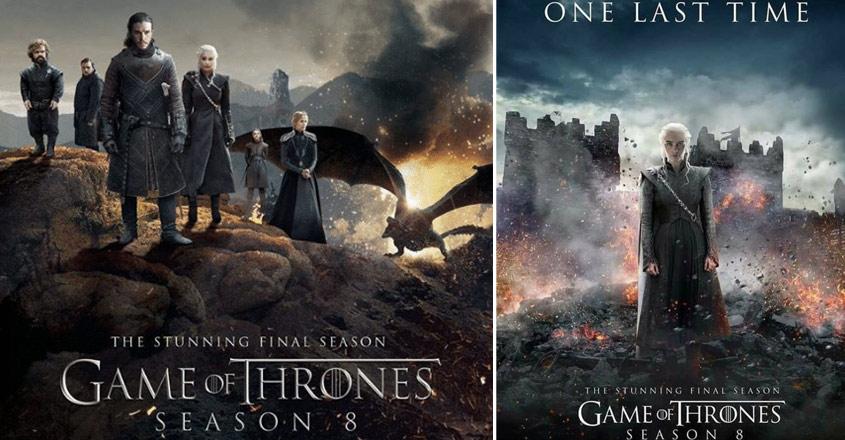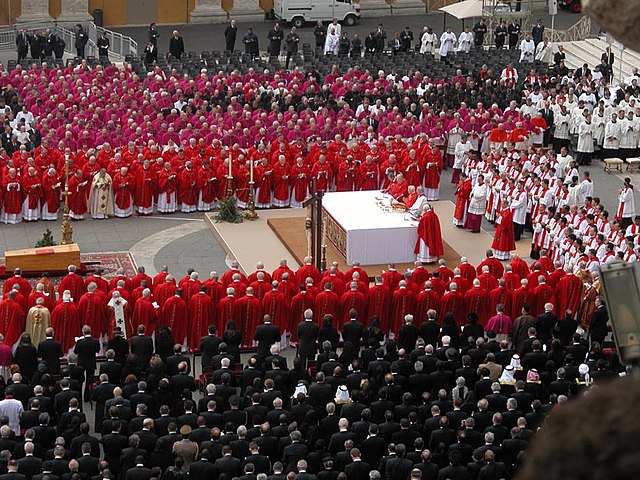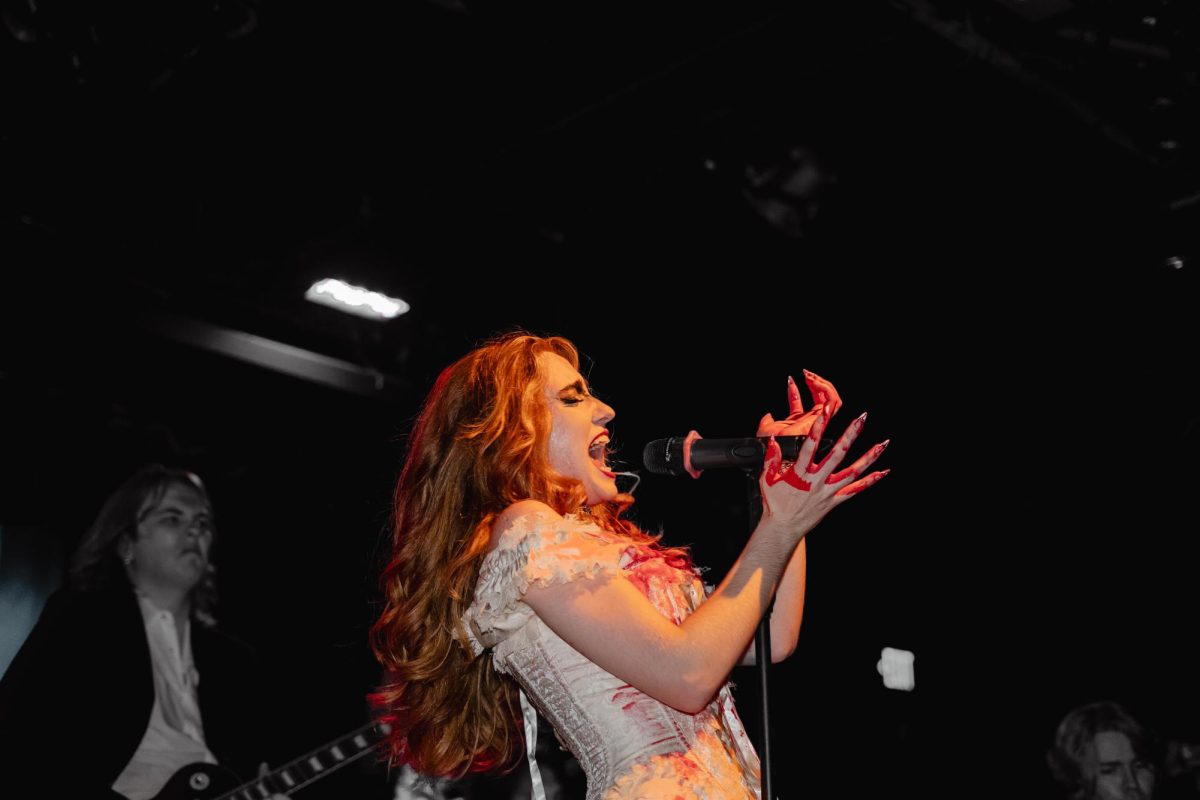[columns_row width=”half”]
[column]
TAKE ONE: Alexandria Otero ’19
After eight seasons and nearly a decade of build-up, the much anticipated “Game of Thrones” episode, titled “The Long Night” graced the screens of millions last week, becoming the longest and most produced battle sequence in television history. Since the beginning of the series, the white walkers who lurked beyond the wall had loomed over our human heroes and villains as they squabbled for the iron throne in the south. For over a year, showrunners D.B. Weiss and David Benioff and castmates of the iconic series have been teasing the battle to its fanbase, chronicling the 55 night shoots and promising a spectacular culmination of one of the key storylines in “Game of Thrones”. While the episode definitely had the ability to stop hearts and raise blood pressure, compelling storytelling was swept aside in exchange for fantastical CGI and fan service, a direction the show has been going in for quite some time now. In the subsequent episode, “The Last of the Starks,” the showrunners attempted to divert the story back to the South –– where Queen Cersei (Lena Headey) and her one-dimensional cartoon pirate consort, Euron Greyjoy (Pilou Asbæk), await –– however, this shift seems to undermine the entire arc of the series, which emphasized the triviality of the “Game of Thrones” in the first place.
The battle episode began moments before the wights arrived and the audience was able to catch a glimpse of all their favorite characters bravely standing in the front lines. We were treated to a miracle by the infamous Lord of Light when Melisandre (Carice Van Houten) set the blades of the Dothraki screamers ablaze. This amazing imagery, however, came at the price of nearly all the Dothraki being killed by the Night King’s army –– interesting that almost all of the people of color were killed before the battle commenced. What then ensues is a battle between life and death that switches from intense battle sequences where the audience can barely glean what is happening on the screen to an eerily quiet horror film where our hero, Arya Stark, is surrounded by zombies and we don’t know if she will make it out alive. When all hope is lost and we think we have seen the end of our heroes, everyone’s favorite assassin, Arya Stark (Maisie Williams) delivers the final blow to the Night King (Vladimir Furdik), ending the long night and the white walker storyline –– so far as we know.
While the battle did give us some scares –– I think I said goodbye to Grey Worm (Jacob Anderson) at least three times –– most of our favorites lived to see another episode, to the dismay of many viewers. We did, however, say goodbye to Theon Greyjoy (Alfie Allen), Jorah Mormont (Iain Glen), Lyanna Mormont (Bella Ramsey) and finally the Red Woman.
In the aftermath of the battle, the showrunners attempt to rebuild the storylines they planted in the first two episodes of the season. Sansa (Sophie Turner) and Daenerys (Emilia Clarke) continue to mistrust one another when the person they should really be mistrusting is our favorite fail up, Jon Snow (Kit Harington). Jon continues to struggle with his identity and chooses to risk the fate of the entire world so he doesn’t have to lie about his true parentage. Of course, this revelation is going to upend the already tenuous alliance between Daenerys and the Westerosi Lords who have already begun to question the sanity of the Silver Queen. The episode ends with the death of Rhaegal (Dany’s second dragon) and Missandei (Nathalie Emmanuel) and Daenerys turning away from the gates of Kings Landing with a look of rage never seen before. Cersei has officially woken the dragon and the audience is in for a battle episode filled with fire and blood.
Since the seventh season, “Game of Thrones” has shifted from a character-driven story about the futility of petty political struggles to a CGI reliant television drama intent on pitting its female characters against one another while raising the male “underdogs.” The first half of season 8 has made it abundantly clear that the writers have lost sight of author George R.R. Martin’s vision for his series, “A Song of Ice and Fire.” Rather than focusing on the existential threat of death personified, the series has chosen to direct the main conflict of the series on the “Game of Thrones,” which negates the entire point of the white walkers in the first place. Instead of uniting against the forces of death, all the characters care more about the human drama that placed them in their current predicaments. This writing of the story has made the characters seem shallow and undeserving of the title Protector of the Realm. Maybe this is the point the writers are trying to make. Maybe, they want to show us the shallowness of humanity and how even death cannot unite bitter enemies.
The most disappointing part of the season so far is the treatment of the female characters. Based on the treatment of Daenerys in the last couple of episodes, it is clear that the writers are still uncomfortable with ambitious and passionate women. In the aftermath of “The Long Night” all of the characters continue to band against Daenerys, who arguably lost the most during the battle against the white walkers. Also, many characters keep pushing back against Daenerys’s claim to the north when their own king, Jon Snow, is the one who swore allegiance to her. Instead of Sansa blaming Daenerys for the North’s lack of independence, she should be directing her anger at her brother who is giving both women conflicting answers. Even though Jon is the one causing all the upheaval, he is the person the people –– mostly men –– want for the Iron Throne. News flash: Jon does not want the throne and the last time he was in a position of power he was murdered.
Although “Game of Thrones” is my favorite show of all time, I am wary about the final two episodes of the season. It seems almost impossible for them to undo the problematic plotlines they have decided to pursue. Hopefully, we can console ourselves with the fan service fights like the much anticipated “Cleganebowl” and the sweet love story between Gendry (Joe Dempsey) and Arya. The showrunners seem to think this is what people watch the show for. If “Game of Thrones” had started as an average TV drama, it would not have the cultural relevance it has now.
[/column]
[column]
TAKE TWO: Kelechi Alfred-Igbokwe ‘19
There have been many theories about what the “main point” of “Game of Thrones” is. Is it the battle for mankind’s survival during the Long Night? Is it a political drama on feudalism? Or is it a family tale of one house’s fall and rise? The answer to that question is still up for debate. One thing we do know, however, is that the existential threat is over after the Battle of Winterfell. What remains is whether there will be a solution to the “wheel” that Daenerys Stormborn of House Targaryen arrived in Westeros to break, and whether House Stark will finally have some peace of mind after seasons of fighting for their wellbeing.
Episode three’s Battle of Winterfell, while underwhelming, in my humble opinion, ties up certain character arcs neatly. Theon Greyjoy was finally recognized as an honorary Stark by Bran Stark, in a point which brings his redemption full circle. Brienne of Tarth was able to fight as a knight, in a turn she could only have ever dreamed of. Arya Stark’s water dancing skills, which she began learning in season one, came into fruition in the defeat of the Night King. And finally, Melisandre fulfilled her destiny for the Lord of the Light in the battle for the dawn. With those arcs tied up, we can now turn to Daenerys Targaryen, Jon Snow, Sansa Stark and the Lannisters to see how their character development pan out in episode four.
The Lannisters, collectively, appear to be regressing in character. Jaime Lannister seems to be dialing back seasons’ worth of development to return to his sister in a move of pure self-loathing. Tyrion Lannister still has unsubstantiated faith in his ability to curtail both Cersei and Daenerys’ worst impulses. And Cersei Lannister has not changed from being the cruelest character on the show. Yet, perhaps that is their endgame. After Tywin Lannister died, the story of the Lannisters has been of their own downfall from within. I believe it takes a Lannister to kill a Lannister.
Jon Snow’s journey is the most tedious of them all. It’s the classic hero’s journey, the chosen one who is loved by the people but wishes for no power for himself. Ever since he came back to life, he’s been subconsciously wanting to die again, putting himself in risky situations that still manage to pay off in the end. Like every hero ever, he isn’t known for being particularly clever in his decision-making, motivated to act rather than think. The endgame for him is all or nothing, either the Iron Throne or death.
Sansa Stark, on the other hand, has the most salient development upwards, from a “little bird” to a phoenix risen from the ashes. She has demonstrated her ability to think pragmatically and strategically, as well as hold on to her home in Winterfell. She is the Stark I would put my money on to rule Winterfell justly and keep everyone safe. By now, she is the de facto “Lady of Winterfell” looking out for the North’s best interest. This naturally puts her at odds with Daenerys, who is essentially wishing to conquer the North — and all of Westeros. Sansa’s primary motivation is preserving Northern sovereignty and protecting House Stark. However, the writing on Game of Thrones is currently doing a shoddy job of showing this. By making it seem as though Sansa is looking to simply undermine Jon and Daenerys, they are doing her character a disservice.
This brings us to Daenerys Targaryen, a focal point of the last episode. There is enough discourse right now as to whether her character is going in the “mad queen” direction. Her character is one that, underneath everything, longs for a home. She started her story exiled in Essos, and every step she took brought her closer to Westeros, her idea of home. The true tragedy is that she is now more alone than ever. She sees the bonds that bind the people around her together, but she is still on the outside looking in. Her single-minded quest for her birthright puts her above people, not equal to them, and in doing so, she has not been able to find true community. She may either be destined to be lonely and disillusioned at the top or find her demise on the way there.
With two episodes left, we have to wait and see how these character discrepancies resolve themselves. I hope that Daenerys finds peace, Sansa gets to rule, Jon dies a hero and the Lannister house dissolves. But this is “Game of Thrones,” and I would be remiss to imagine a happy ending where everyone gets what they deserve.
[/column]
[/columns_row]




